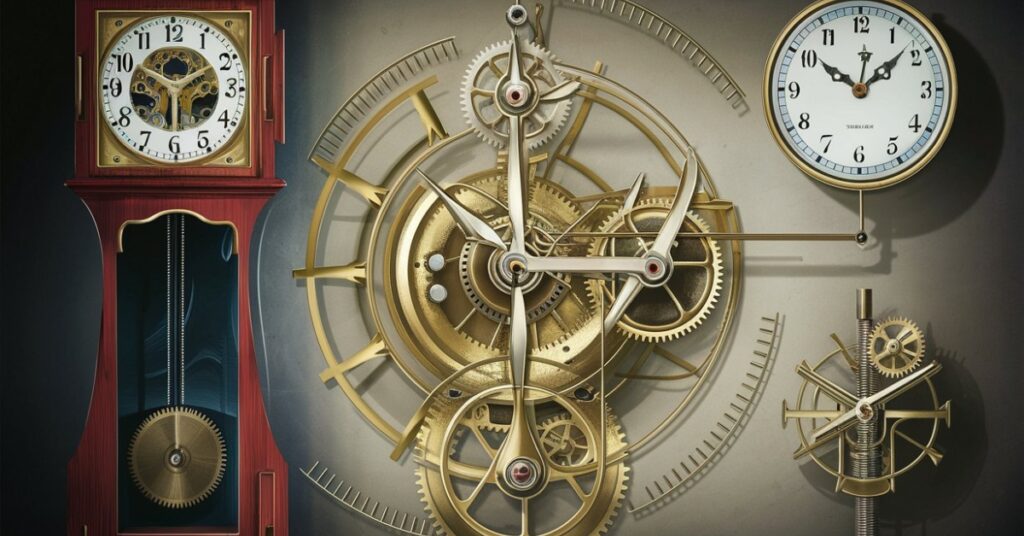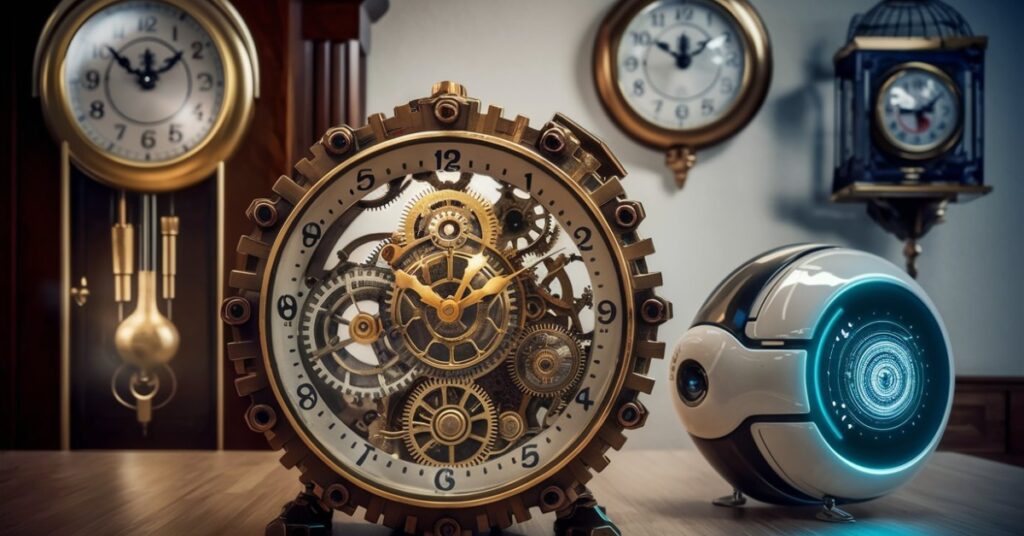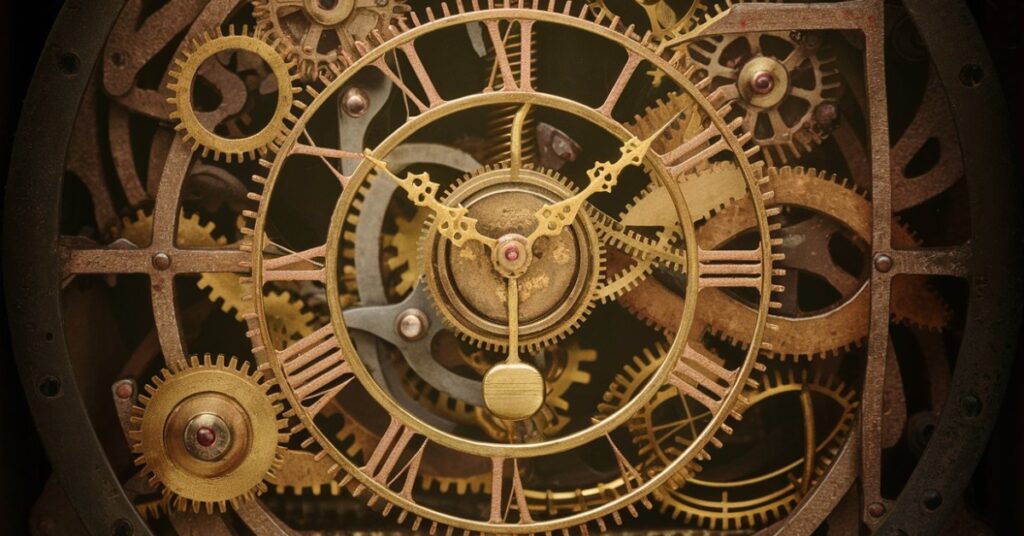Introduction to Clock Mechanism
Clock Mechanism are the intricate internal workings that keep time in our everyday lives. Originating from ancient civilizations, they have evolved into essential features in homes, workplaces, and public spaces.
Advancements in technology have led to the development of more sophisticated mechanical and electronic mechanisms, allowing for greater accuracy and reliability. Today, clock mechanisms come in various designs and styles, catering to diverse preferences and applications.
From vintage grandfather clocks to modern digital watches, these mechanisms continue to play a vital role in our daily routines, reminding us of the inexorable march of time.
History of Clock Mechanisms
The history of clock mechanisms spans from ancient civilizations to the Middle Ages, where mechanical clocks emerged in Europe. These early clocks, often large and housed in towers, churches, or public squares, symbolized civic pride and technological achievement.
The Industrial Revolution introduced mass production techniques and more accurate timekeeping mechanisms. The 19th and 20th centuries saw the rise of pendulum clocks, pocket watches, and eventually quartz and atomic clocks, revolutionizing timekeeping once again.
Today, clock mechanisms continue to evolve with digital advancements, reaching unprecedented levels of precision and accuracy. Despite the rise of smartphones and smartwatches, the timeless charm of mechanical clocks remains, reminding us of our shared human history and the importance of timekeeping.
Types of Clock Mechanisms

Clock mechanisms are diverse and have varying functionalities. Mechanical clock mechanisms, known for their traditional charm, operate using gears, springs, and pendulums. Quartz clocks use natural oscillations of quartz crystals to regulate time, offering high accuracy and affordability.
Atomic clock mechanisms use atoms’ vibrations for precise timekeeping, used in scientific laboratories, space exploration, and global navigation systems. Digital clock mechanisms, powered by electronic circuits and displays, offer convenience and versatility, often featuring alarms, timers, and weather displays.
Regardless of the type, clock mechanisms are essential in our daily lives, helping us stay organized, punctual, and connected to the rhythm of time.
Components of Clock Mechanism
Clock mechanisms are essential for accurately measuring and displaying time. They consist of the clock movement, which includes gears, springs, and escapements that regulate the movement of the clock’s hands.
The escapement controls the release of energy from the clock’s mainspring or weight, ensuring the gears move at a constant rate. In mechanical clocks, the pendulum acts as a regulator, controlling the speed at which the clock’s gears turn.
Mechanical clocks use analog hour, minute, and second hands. While digital clocks use electronic displays for numerical time tracking, ensuring smooth and accurate operation.
Maintenance and Repair of Clock Mechanisms
Maintenance and repair of clock mechanisms are essential to ensure their continued accuracy and functionality. Regular maintenance involves tasks such as cleaning, lubricating, and adjusting various components to keep the clock running smoothly.
In the event of a malfunction or damage, repairing clock mechanisms requires careful diagnosis and skilled craftsmanship. This may involve disassembling the movement, replacing worn or damaged parts, and reassembling the clock with precision to ensure proper function.
This includes cleaning the gears and escapements to remove dirt and debris that can interfere with their operation, as well as lubricating them to reduce friction and wear. Overall, regular maintenance and timely repairs are crucial to preserving the longevity and accuracy of clock mechanisms.
Advantages and Disadvantages of Different Clock Mechanisms
Clock mechanisms are essential tools in our daily lives, providing a means of keeping track of time. Mechanical clock mechanisms, such as those found in traditional pendulum clocks, offer the charm of traditional craftsmanship and intricate designs, but require regular winding to maintain accuracy and may be sensitive to temperature and humidity changes.
Quartz clock mechanisms, powered by batteries, offer exceptional accuracy and reliability, but lack the aesthetic appeal and craftsmanship of mechanical clocks and may require periodic battery replacement.
The choice between different clock mechanisms depends on factors such as desired accuracy, maintenance requirements, and aesthetic preferences. The main components of a clock include movement, escapement, pendulum, quartz crystal, and display.
Movement is the heart of the clock, regulating the movement of the clock’s hands. Escapement controls the release of energy from the clock’s mainspring or weight, while pendulum acts as a regulator, controlling the speed at which the clock’s gears turn. Quartz clocks rely on the vibrations of a quartz crystal to maintain time.
Display varies depending on the type of clock: mechanical clocks typically have analog displays with hour, minute, and sometimes second hands, while digital clocks use electronic displays to show time numerically.
These components work in harmony to keep the clock running smoothly and accurately, allowing us to stay organized, punctual, and connected to the rhythm of time.
In conclusion, clock mechanisms play a crucial role in our daily lives, helping us stay organized, punctual, and connected to the rhythm of time.
Innovations in Clock Mechanisms

Recent technological advancements have led to significant innovations in clock mechanisms. Atomic clocks, which utilize atoms’ vibrations to measure. Time is utilized in scientific research, navigation systems, and telecommunications networks.
With smart technology built into the clock mechanism, it automatically adjusts the time, syncs with other devices and is connected to the internet. These smart clocks cater to modern lifestyles and cater to various needs.
Materials science advancements have led to more durable and energy-efficient components, including lightweight, corrosion-resistant materials and low-power consumption circuits and solar-powered mechanisms.
These innovations continue to push the boundaries of timekeeping technology, offering enhanced accuracy, functionality, and reliability for various applications.
Applications of Clock Mechanisms in Various Industries
Clock mechanisms are essential tools in various industries, providing precise timekeeping solutions for various applications. They are crucial in the transportation sector for coordinating schedules, ensuring punctuality, and maintaining efficiency.
Time intervals are utilized in healthcare for medication administration, patient monitoring, and laboratory procedures, and in manufacturing for scheduling production, monitoring equipment performance, and tracking employee work hours.
These clock systems help optimize production efficiency, minimize downtime, and ensure timely delivery of goods and services. In financial institutions, educational institutions, government agencies, and commercial enterprises, clock mechanisms are essential for administrative and operational purposes.
Future Trends in Clock Mechanisms
Future trends in clock mechanisms are expected to focus on precision, connectivity, and sustainability. Smart technologies will be integrated into clock mechanisms, allowing remote monitoring and customization via digital platforms.
The use of solar power or kinetic energy will be utilized to power clock mechanisms, thereby reducing the need for traditional batteries. Advancements in materials science and manufacturing techniques will lead to more durable and lightweight clock components.
Miniaturization and microelectronics innovations will create ultra-compact clock mechanisms for wearable devices and IoT applications. Overall, future clock mechanisms will prioritize efficiency, convenience, and environmental responsibility, reflecting broader societal and technological developments.

